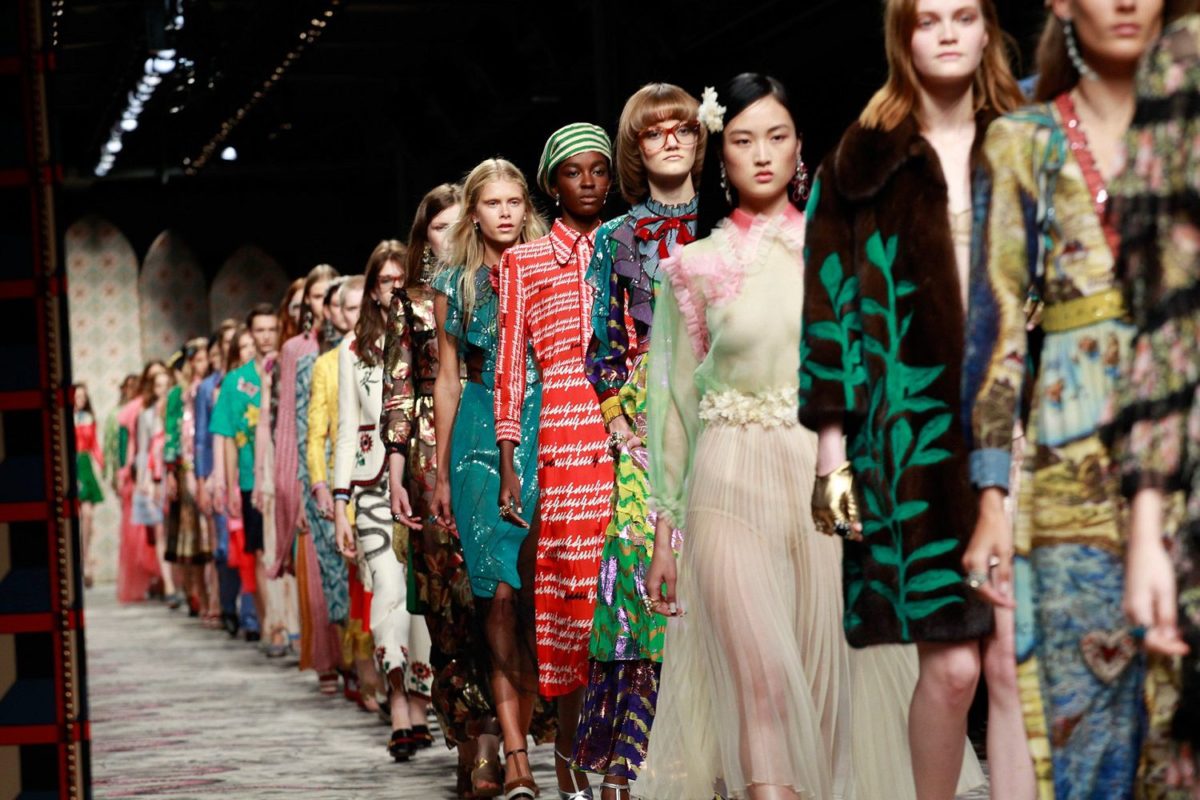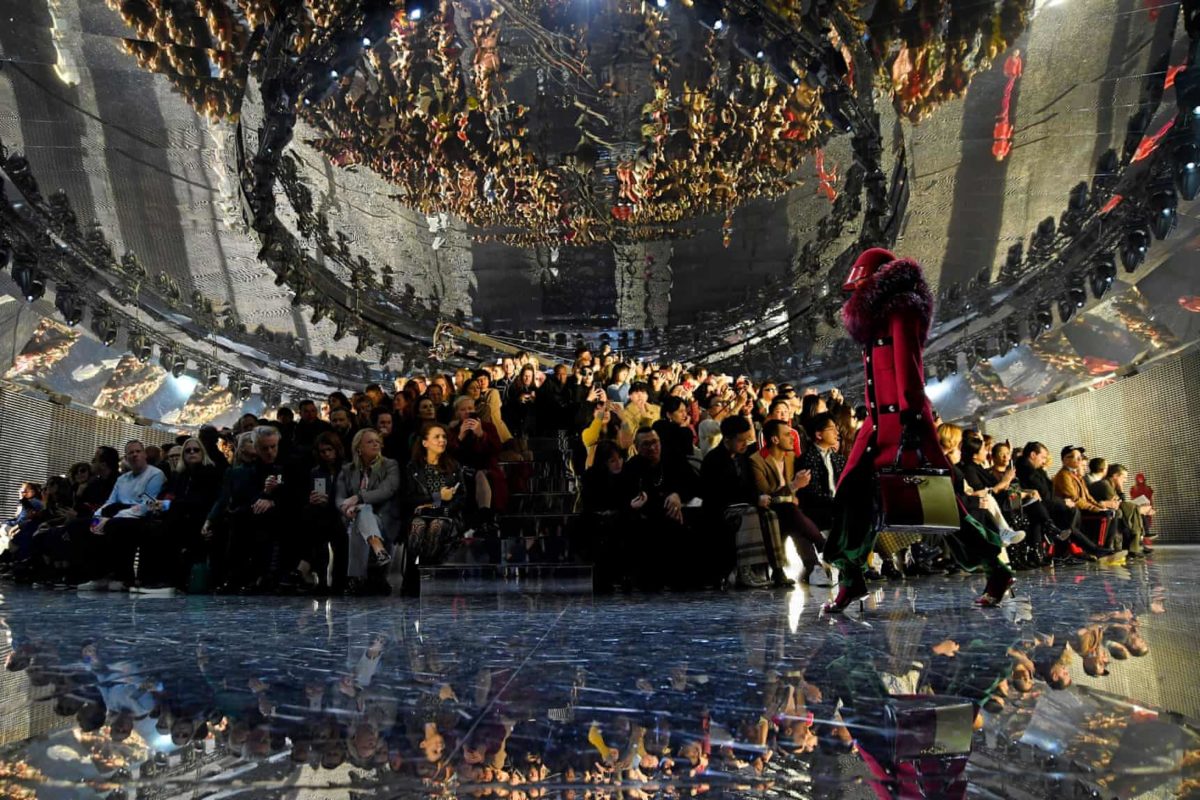Gucci announced last week that the international luxury brand is now completely carbon neutral, seemingly making good on their pledge to reduce the fashion industry’s environmental impact. But could it simply be a way for the brand to offset their recent controversies?

In a public statement, Gucci has claimed that it will now be offsetting the greenhouse gas emissions caused by their operations. The brand will be tackling this through four REDD+ projects. These include efforts to reduce emissions by fostering conservation, sustainable forest management and enhancement of forest carbon stocks.
Marco Bizzarri, President and CEO of Gucci said,
“A new era of corporate accountability is upon us and we need to be diligent in taking all steps to mitigate our impacts, including being transparent and responsible for our GHG emissions across our supply chains. Gucci will continue to work in a smart and strategic way to avoid and reduce our impacts, while simultaneously investing in innovation as a driver for sustainability.”
The news comes after 32 fashion brands, including Prada, Chanel and Burberry pledged to fight climate change by signing a sustainability pact at the G7 summit last month. The push was led by François-Henri Pinault, CEO of Kering, which manages Gucci among other high-end fashion houses.
Kering has broader aims to make the company more ethical. These include focuses on animal welfare and avoiding the hiring of underage models. Gucci is now positioning itself as an innovator in the sustainable fashion sector. Bizzarri went on to say,
“However, in my view, this is just not enough nor will it happen fast enough given the sustainability challenges we are up against in our industry and the reality of our global climate and biodiversity crises. To address the need for urgent solutions, Gucci is setting an ambitious new precedent through our carbon neutral commitment. This is based on a clear strategy to ensure we account for all of our GHG emissions across our supply chain, act to first avoid, reduce and restore, and then offset the unavoidable emissions through important REDD+ projects.”
Greenwashing?

This announcement is Gucci’s latest in their quest to become the leading environmentally-friendly fashion house. Its clear that this is a much-needed step in the right direction and is more ambitious than any other brand’s current targets.
It’s common knowledge that the fashion industry is one of the leading causes of climate change and pollution on a global scale. An honest attempt to address this impact, along with clear and transparent goals, is exactly what the fashion industry needs to be doing.
At SS20 London Fashion Week, competing fashion house Burberry revealed that their show was entirely carbon neutral. We can be hopeful that environmental concerns are being taken more seriously by the big-wigs in the fashion industry. But when profits are tied to how sustainable a brand seems to the general public, particularly young consumers, it’s easy to be cynical.
“Sustainability” is a term that is thrown around an awful lot by fashion houses nowadays. Industry professionals are aware of the power of this buzzword. It’s a way for fast fashion brands to feign concern while not actually committing to any long-term or meaningful goals. Sustainability as a term doesn’t approach the true specificity required to address the wide-reaching impact that the industry has on the planet. This greenwashing allows brands to increase their profits by tricking consumers into thinking they are making a more ethical choice.
On the less cynical side, Gucci has been running a environmental profit and loss initiative since 2015. This is part of of its 10-year sustainability strategy, which does suggest a long-term commitment to enivornmental concerns.
From the outset, it seems that Gucci are determined to meet their environmental targets. And it’s in their best interests to do so. Especially when you consider the wealth of controversies that the brand has had to spring back from.
Ofsetting Controversies

Back in Spring 2003, the brand released an ad campaign featuring a model with the Gucci logo shaved into her pubic hair. Called degrading by critics, the controversy was exacerbated last year when the photographer of the campaign was accused by 13 industry workers of sexual assault.
At the beginning of the year, Gucci apologised for its release of a $890 women’s black balaclava sweater that very much resembled blackface. The incident caused the company to apologise and pull the item from sale.
Just three months later, the brand released the ‘Indy Full Turban’ from the same collection. This sparked new critiques of the house’s cultural insensitivity. Twitter user Naureen Singh tweeted about the item, asking:
Does anyone wanna explain to me why @gucci thought selling a turban for $790 was a good idea? @Nordstrom
This isn't a "trademark style." This is not some "fashion accessory."
This is just very-off. pic.twitter.com/hVBIVvb9Ic
— Naureen Singh (@Naureenksingh) May 14, 2019
Dear @gucci, the Sikh Turban is not a hot new accessory for white models but an article of faith for practising Sikhs. Your models have used Turbans as ‘hats’ whereas practising Sikhs tie them neatly fold-by-fold. Using fake Sikhs/Turbans is worse than selling fake Gucci products pic.twitter.com/sOaKgNmgwR
— Instagram: HarjinderKukreja (@SinghLions) May 16, 2019
Nordstrom replied in a tweet:
“We have decided to stop carrying this product and have removed it from the site. It was never our intent to disrespect this religious and cultural symbol. We sincerely apologize to anyone who may have been offended by this.”
If not to disrespect a cultural symbol, it’s hard to see what exactly their intent was. It’s a truly bewildering array of missteps for the brand. In the wake of these controversies, Gucci launched a program to promote diversity and inclusion.
It’s not a stretch by any means to assume that the brand’s new commitments take their public perception into account. And by extension, the need for the brand to build a new and more ethical front.
In the end, regardless of the intentions behind it, Gucci’s commitment to address their carbon footprint can only be a good thing. Provided they stick to their targets, of course. Hopefully this will put enough pressure on other big brands to follow suit.
Subscribe to FIB’s newsletter for your weekly dose of music, fashion and pop culture news!







